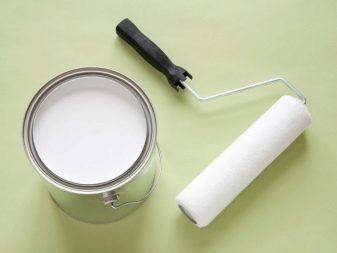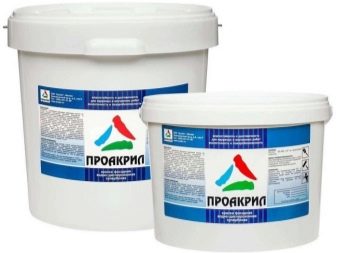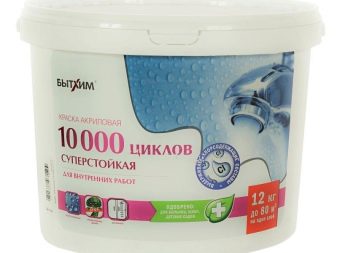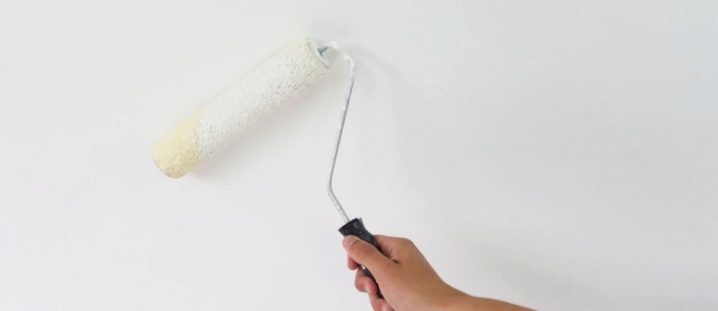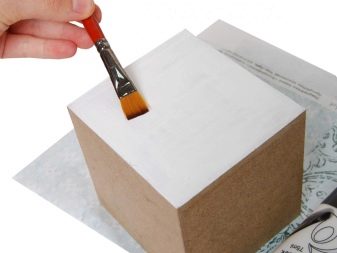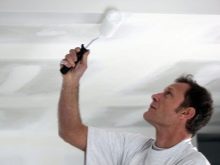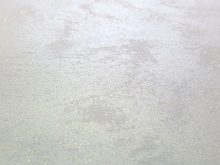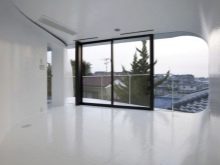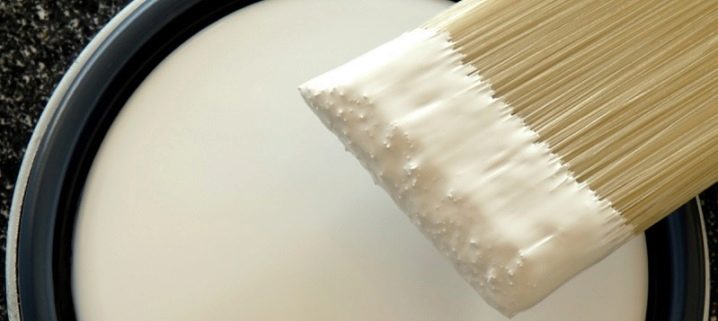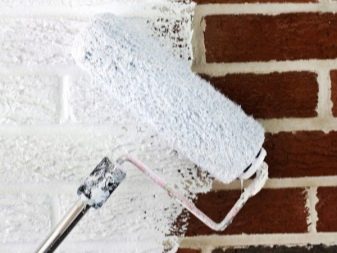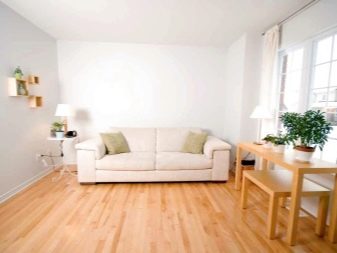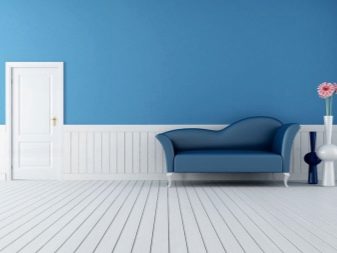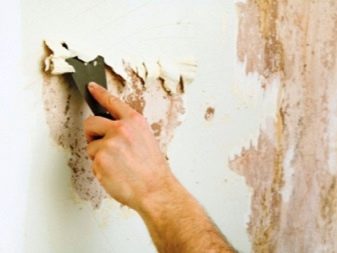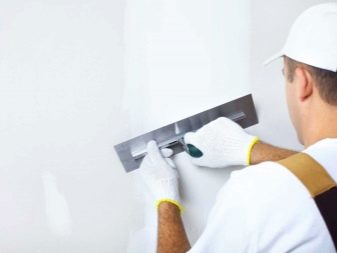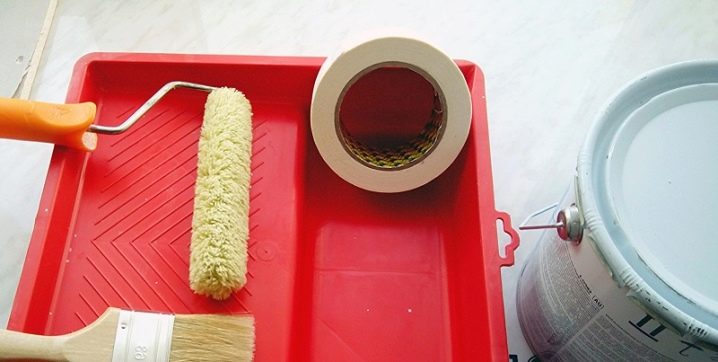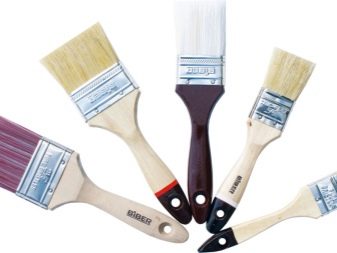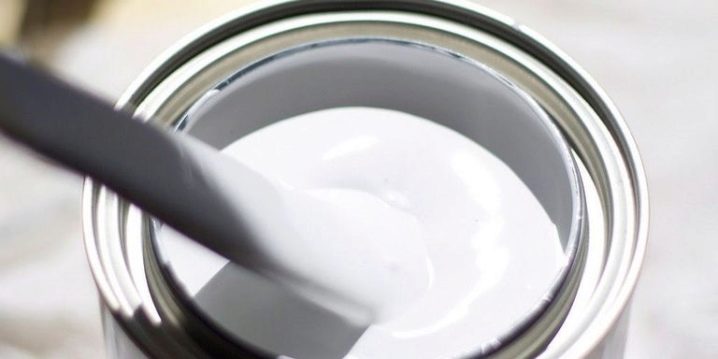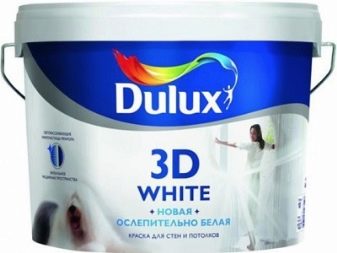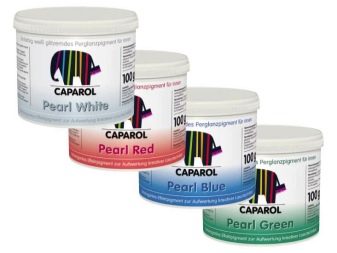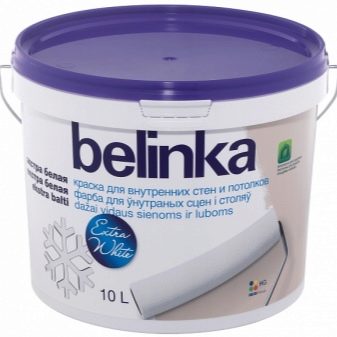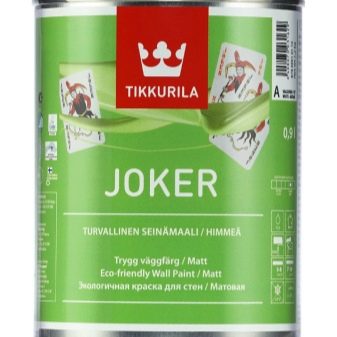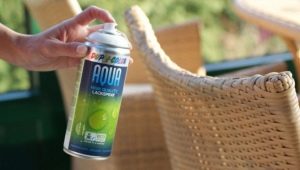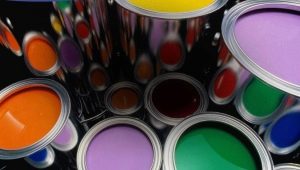White acrylic paint: characteristics and scope
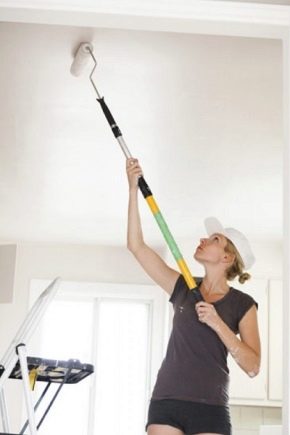
It is no secret that all the main trends come to us from Europe, including those related to interior design. White coatings are very popular. It can be said that this color is basic, because every second client, turning to the designer, wants to use exactly this shade.
This article describes the characteristics of white acrylic paint, its features and scope.
Distinctive features
The basis of the paint is polyacrylic substances. Additional elements are needed in order to improve the already remarkable characteristics of the coating. If the composition has a water-dispersed emulsion, then this option is better suited for interior work..
Organic solvents should be chosen for outdoor use.because they better withstand environmental exposure. In such a white paint material add titanium oxide, as well as chalk.
How much color is white depends on the degree of purification of the basic substance. If it differs in any shade, then the coated surface will not be pure white. Any shade has its advantages, but if you absolutely need super-white paint, use the international RAL catalog.
Advantages of white acrylic paint:
- wide scope;
- durability;
- strength;
- water resistance;
- the ability to overlap the previous layer and adhere well to the working surface;
- saving time (due to ease of application and quick drying);
- color fastness (does not change under the influence of sunlight, heat or over time);
- no smell.
There are some disadvantages:
- destruction at high temperature, freezing (water-based);
- cannot be applied to certain types of plastics (when diluted with organic solvents);
- quite high cost.
Kinds
White paint is divided into several types (depending on the application):
- construction;
- interior;
- automobile;
- artistic;
- cosmetic.
In appearance, acrylic paint can be:
- matte;
- glossy;
- semi-gloss or semi-gloss;
- mother of pearl.
How the surface will look depends on fillers and thickeners.
In addition, there are special paints with additives that enhance the protective properties of the coating:
- anti-corrosion;
- frost-resistant;
- moisture resistant (washable);
- incombustible (only if they dissolve in water);
- elastic (make it possible to color objects that somehow change their shape - bend or stretch), and so on.
The form of production of acrylic paints and varnishes largely depends on the scope and scope of work. There are quite large cans (up to 10 liters) and very small ones. Base white acrylic paint becomes color as a result of adding color to it. You can change the shade of color paint by adding white color to it.
Scope of application
Acrylic paint can be called universal. This coating is suitable for various surfaces (both inside the building and outside):
- treated (plastered, covered with plasterboard and tiles);
- unprocessed (concrete, made of brick, blocks, plaster).
Such paint can be used not only on construction sites, it covers wood, metal, glass, cloth.
If we talk about an apartment or a separate room, then it can be noted that the use of such paints and varnishes is most often caused by three factors:
- the need to make the room brighter;
- visual resizing;
- universality (in terms of the ability to be combined with other colors).
The white coating reflects light better: this can be corrected if the windows face the dark side or if there are not enough light sources. Besides, making the floor or ceiling lighter, you can create the illusion of an increase in room height. Having painted all walls or two opposite, you can achieve the same effect, but in width or in length.
You can play on the contrast and make the door, window frame or plasterboard white.
Preparation and coloring
The preparatory stage is no less important:
- White paint based on acrylic can be applied to the old coating only if there are no defects on the surface, if it does not peel off.Apply a primer to the surface - and you can begin to paint.
- If the previous coverage does not seem reliable to you, there are defects, it is better to remove it. To do this, use spatulas or a grinder (if you want to remove wallpaper, paint or plaster). A chisel, hammer and hammer drill are suitable for removing tiles. It is necessary to clean the entire finish, apply a primer and plaster with a roller (using a spatula and rules, focusing on the level).
- The surface should be smooth, since all the flaws will be noticeable. Important and the thickness of the paint. It may take several layers to hide the base.
- Colored spots appear through the white coating very often, so all the work should be done as carefully as possible.
- Tools must be prepared in advance. For application, you need to prepare a roller (it is much better if it is polyamide or velor), a painting bath, brushes or an airbrush.
- Take care of the protection of the premises: for this you need a film and building tape. Prepare special or unwanted clothing, a hat, shoes, gloves, a stepladder and a long handle for the roller.A respirator is not needed, because this type of material, as a rule, does not have a strong odor.
The process of dyeing with acrylic paint is quite simple; you can do this on your own and quickly:
- Bring the paint to the desired consistency by adding water or a solvent (depending on the composition). The liquid solution will give a thinner layer; thicker material will be needed more. No need to keep the paint open. It is necessary to pour or prepare the solution in portions, because here the obvious plus turns into a difficulty - the coating dries very quickly.
- If the area allows - use a roller. Pour the paint into the recess of the bath, there should be a dip roller. Then it will need to be squeezed out on a special platform of the same bath - and can be painted.
- Hard to paint with a brush.
- When spraying the composition with an airbrush, speed is important to prevent freezing.
Manufacturers
On the market of paints and varnishes presents a variety of compositions. Manufacturers produce not only white acrylic paints, but also other materials - in the form of thickeners, solvents, varnishes with acrylic.
Some brands have won great popularity among consumers, but also among newbies there are decent ones with high-quality products. When choosing, you need to rely on three factors:
- customer reviews;
- personal experience;
- Match your budget.
Good reviews leave on the following brands:
- Dulux (Netherlands);
- Sniezka (Poland);
- Caparol (Russia);
- Lakra (Russia);
- Tex (Russia);
- Belinka (Slovenia);
- Kolorit and Joker, belong to the concern Tikkurila (Ukraine);
- Sadolin (Finland);
- Farby Kabe (Switzerland);
- TehnoLux (Russia).
Production is carried out in different parts of the near and far abroad, as well as in Russia. The technology of production of acrylic paint is almost the same everywhere, but the components and quality of raw materials are different, so white coatings from different manufacturers may differ from each other.
It is important to purchase paint with a margin so as not to use together two products produced in different places.
In the next video you will find more information about acrylic paints.
